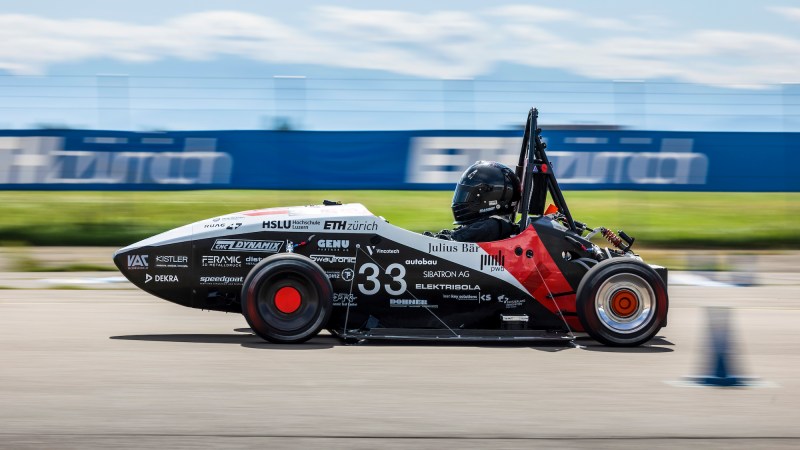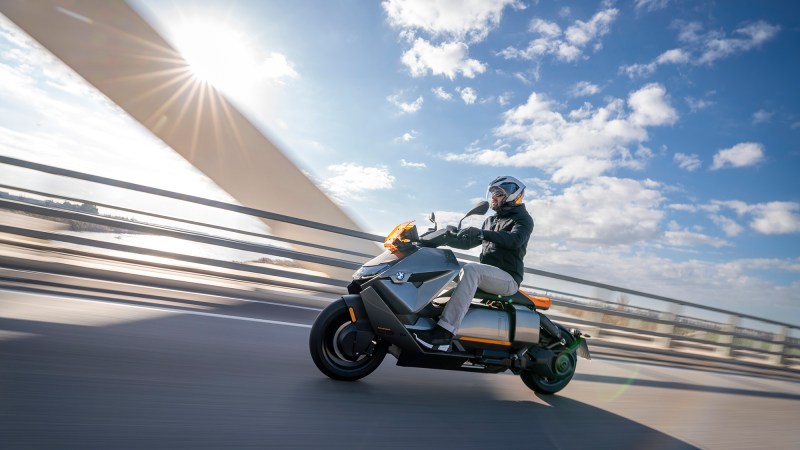

In Sweden, the word lagom represents the Goldilocks-esque concept of “not too much, not too little, but just right.” Swedish automaker Volvo had this concept in mind when it created the brand’s newest model, the EX30. At the same time, the electric car had to meet a major objective: have the lowest carbon footprint of any Volvo model to date.
Volvo says that the EX30’s “total carbon footprint” is 25 percent less CO2 than the electrified versions of its C40 and XC40 models, in line with the automaker’s stated goal to cut CO2 emissions per car by 40 percent by 2025. To achieve this, they took into account the manufacturing processes, worked to simplify its design, and reduced the materials it needs. Even the exterior colors like Moss Yellow and Cloud Blue superficially reflect Volvo’s Earth-friendly goals.
What’s more, the vehicle will cost less than $40,000, which in a world of extra-pricey EVs (the average price for an EV was $53,469 in July of this year, according to Cox Automotive), is impressive. Starting at $36,245 (including destination fees), the EX30 is an attractive package.
Here’s how Volvo achieved its sustainability goals while aiming for that “just right” feel.
Sustainable interior ‘rooms’
The company integrated recycled PVC collected from house window frames, PET plastic from single-use water bottles, plant materials like flax fibers, and even discarded denim threads from the blue jeans recycling process into the EX30’s interior.
Buyers of the new EX30 can choose between four interior expressions for the vehicle. Volvo calls the interior themes “rooms” because people spend so much time in their car, Volvo color and materials designer Camille Audra explained to PopSci.
Two interior rooms employ recycling themes: they are called indigo, which is made from denim like the blue jeans you may be wearing right now, and breeze, a patterned knit. And two feature natural materials: they are called mist (flax fiber) and pine (tree resin).
“This is inspired from fashion,” Audra says. “People wear blue jeans everywhere in the world.”
Old denim is often recycled into things like pet bed inserts, building insulation, and thermal packaging insulation. During the process, Audra says, the short fibers that are left over could become waste, but in this case, are instead collected and woven into a new material.

Combined with cellulose (also a plant-based material) to give strength to the material, the fibers become a durable surface for the dashboard and door panels. Bonus: there are no zippers or button flies to get in the way.
Along with blue jeans material, flax fiber is lightweight and natural. Also known as linseed, flax is exceedingly strong when woven into fibers. (The flowering plant yields seeds that are pressed to extract oil, or dried and sold as a product in grocery stores around the country. Flaxseed meal—the byproduct of the flaxseed oil-pressing process—has a second life as livestock feed.) Volvo is on track with other automakers, like Kia and Hyundai, that are also using flax fibers inside their cars for sustainability and weight benefits.
“We decided to use flax because it’s used to regenerate soil [between crops] and uses less water than other crops, and still has a nice touch and feel,” Audra says.
In the summer of 2021, Volvo revealed its Concept Recharge, which used flax fibers from a Swiss company called Bcomp. By investing in Bcomp, a company that has also provided products to the racing arm of McLaren or Porsche, Volvo now has a mainline to sustainable materials.
“Bcomp’s calculations show that compared to regular plastic parts, the natural fiber-based composites are up to 50 percent lighter, use up to 70 percent less plastic and generate up to 62 per cent lower CO2 emissions,” Volvo says.
Volvo is also featuring a “room” in a pine theme. The manufacturer uses a material called Nordico, which is made from recycled materials such as PET bottles, corks recycled from the wine industry, and pine resin from sustainable forests in Sweden and Finland.

New colors, natural themes
For one interior trim option, Audra revealed that the design team scanned a piece of granite and then imprinted the granite’s natural patterns onto the recycled plastic. Using a stone grain offers more recycling options later as well, because the texture doesn’t require paint as a finish.
On the outside, Volvo offers a vibrant hue—probably the brightest color ever seen on a Volvo model—called Moss Yellow, inspired by the lichens that grow on the rocks of the west coast of Sweden. And Cloud Blue looks white in the sunlight but transforms into a soft blue when it’s overcast.
Even the technology reflects Volvo’s all-in commitment to a low carbon footprint. By keeping parts to a minimum, Volvo creates fewer carbon emissions when manufacturing the EX30. So far, its strategy is working: the brand expects 80 percent of EX30 buyers to be new to Volvo, and overall sales are skyrocketing.
Correction on Nov. 8, 2023: This post has been updated to clarify that the denim material is used on the dashboard and door panels, not the seats.






















